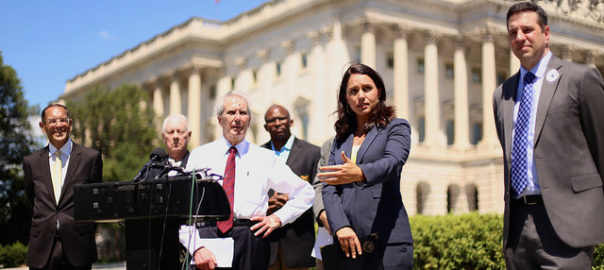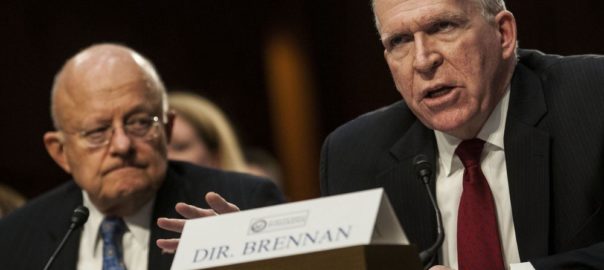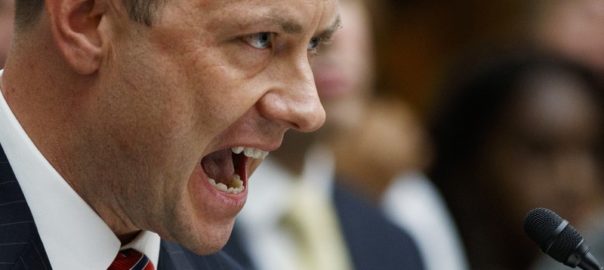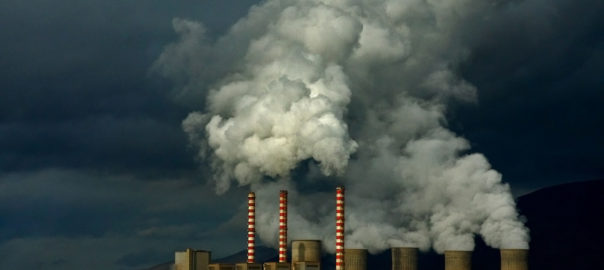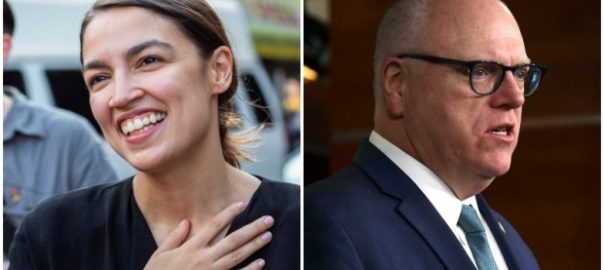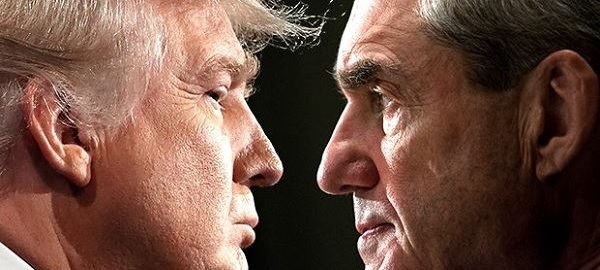By Kent R. Kroeger (July 23, 2018)
Last year, I was excited to read that a team of University of Toronto psychologists had come up with a quantifiable and validated measure of ‘charisma’ — an elusive construct that has never been well-defined or measured in a consistent way by academics and writers.
Charisma is one of those, “I know it when I see it” type of phenomenon. Yet, collectively, people can generally create a common list of those who possess this trait in greater quantities than the average person. Politics, in particular, has a rich history of charismatic leaders: Franklin Delano Roosevelt, Theodore Roosevelt, John F. Kennedy, Bill Clinton, Martin Luther King, Malcolm X, Ronald Reagan, Jesse Jackson, etc.
So, last fall, when Konstantin O. Tskhay, R. Zhu, C. Zou, and Nicholas Rule published their research on charisma, Charisma in Everyday Life: Conceptualization and Validation of the General Charisma Inventory, I was hopeful.
These researchers created the General Charisma Inventory (GCI), a six-item, self-reported inventory of questions used to measure someone’s level of charisma. Using a combination of exploratory and confirmatory factor analytic techniques to construct this six-item measure of charisma, they empirically tested their operationalization of the charisma construct and found it to be observable, consistent with public conceptions, and predictive of real-world outcomes (i.e., persuasion).
To measure charisma, they ask respondents to rate their agreement on a five-point scale from 1 Strongly Disagree to 5 Strongly Agree, whether “I am someone who…”:
- Has a presence in a room
- Has the ability to influence people
- Knows how to lead a group
- Makes people feel comfortable
- Smiles at people often
- Can get along with anyone
The first three questions measure a person’s “persuasiveness” and the last three measure their “affability” (i.e., likability).
Unfortunately, my enthusiasm for the GCI waned quickly as it became apparent the researchers had come dangerously close to confounding the measurement of the GCI (an independent variable) with the outcome they were trying to explain (persuasion). This is a problem far too common and hard to avoid in psychometric research.
In Toronto researchers’ derivation of the GCI, two factors largely defined its measurement: a person’s (1) persuasiveness and (2) likability. In other words, if someone is persuasive and likable (i.e., charismatic) they are able to persuade others.
That is the definition of a circular argument and it offers very little empirical value since the GCI correlates strongly with persuasion outcomes by definition, not by construct validity.
Konstantin, et al. are correct about one thing: the empirical literature on charisma is sparse and only loosely connected. Two exceptionally interesting examples are:
Fond, Ducasse, Attal, Larue, Macgregor, Brittner, and Capdevielle, Charisma and leadership: new challenges for psychiatry, Encephale. 2013 Dec;39(6):445–51.
Vergauwe, Wille, Hofmans, Kaiser, de Fruyt, The Double-Edged Sword of Leader Charisma: Understanding the Curvilinear Relationship Between Charismatic Personality and Leader Effectiveness, Journal of Personality and Social Psychology, 2018, Vol. 114, No. 1, 110–130.
The Vergauwe, et al. research is especially interesting in that it attempts to answer the question: Can someone be too charismatic and therefore less effective at persuasion? According to these researchers, the answer is an emphatic ‘yes’.
Some leaders, when facing high pressure situations, are better than others at adjusting to the situation and remaining “self-composed” ( see research by Hogan, R., & Hogan, J. (2007). Hogan Personality Inventory manual. Tulsa, OK: Hogan Press).
Building on Hogan and Hogan (2007), Vergauwe, et al., found that charismatic leaders who are good at such adjustments are also more effective at persuasion. Figure 3 (below), reprinted from their research article, shows the two distinct effectiveness curves for leaders with ‘low’ and ‘high’ levels of adjustment (self-regulation).

What is charisma?
The Merriam-Webster definition of charisma goes like this: a personal magic of leadership arousing special popular loyalty or enthusiasm for a public figure (such as a political leader).
‘A personal magic’? A brave attempt, I suppose, but inadequate for theory-building and empirical validation. If the prior research on charisma tells us anything is that it is a multi-faceted concept where, in practice, some charismatic individuals may be high some of these factors but low on others.
Randall Collins, Professor of Sociology at the University of Pennsylvania, argues there are four kinds of charisma — on-stage charisma, backstage charisma, success-magic, and reputational charisma — and the “more kinds you have, the more charismatic you are.” He treats charisma as a quantity of something good, like money or number of close friends.
German sociologist Max Weber defined charisma as “a certain quality of an individual personality, by virtue of which he is set apart from ordinary men and treated as endowed with supernatural, superhuman, or at least specifically exceptional powers or qualities.”
Furthermore, Weber saw charismatic leadership as unstable and unsustainable over long periods of time.To him, the loyalty charisma inspires among people is less durable compared to other types of political loyalty such as tradition-based and legal-rational-based.
In her study of charismatic leadership among Muslim clerics in contemporary Indonesian, Texas A&M Assistant Professor Jennifer Epley saw the weakness in Weber’s view of charisma when she wrote, “Weber’s overall theory of charismatic leadership needs to be expanded to include details about how to precisely identify charismatic leaders and make distinctions between leaders. In addition, we need an improved account of the individual or historical conditions and cultural attitudes that give rise to and influence charismatic leadership.”
For charisma to have any empirical value, ‘knowing-it-when-you-see-it’ is not enough, we need to know what qualities and attributes describing individuals make them charismatic, and does this charisma vary, not only across individuals, but over-time and over different contexts within the same individual.
One must also make a distinction between charismatic leaders and demagogues. It is a fuzzy line as demagogues are going to have many of the same characteristics as charismatic leaders, but have one important distinction — demagogues exploit existing prejudices of the time to form a political movement. Charismatic leaders, on the other hand, may also exploit existing sentiments within a population, but also create new supporters through persuasion techniques.
I may have created the same circular definition I criticized the previous research for doing — using persuasion to both define and validate the charisma construct — but I offer this difference: I define someone as charismatic if, among other attributes such as attractiveness and affability, they also engage in the systematic use of proven persuasion techniques. This definition emphasizes that a charismatic leader can employ proven persuasion techniques without necessarily being successful at persuasion [Think Barack Obama]. The relationship between charisma and persuasion is now a probabilistic one and can be empirically tested.
Political consultants are looking for the next John F. Kennedy or Ronald Reagan
Even if we develop a suitable definition for charisma, is there any evidence it will be useful in predicting important leadership outcomes, such as elections?The evidence in fact remains sparse in support of its impact on election outcomes. For every charismatic politician like JFK, there is a Richard Nixon, Michael Dukakis or Charlie Crist. And, no, anti-charisma is not a form of charisma.
One empirical study of charisma and election outcomes was conducted by The University of Amsterdam’s Wouter van der Brug and The Ohio State University’s Anthony Mughan in 2007. Their investigation of three Dutch elections found that “there is in fact little support for (Weber’s) charismatic leadership hypothesis, at least in the context of leaders shaping electoral outcomes.”
“While recognizing that charisma may manifest itself in other, perhaps indirect, ways, there would seem to us at the very least to be a need for the notion of charisma to be conceptualized more rigorously if it is to continue to be used as an explanation of right-wing populist party success,” concluded van der Brug and Mughan.
Using formal theory, a recent study by Mexican political scientist Gilles Serra concluded that charisma encourages candidates with less experience and more extreme policy stances. And the empirical evidence supports the conclusion. “The sudden success of charismatic outsiders with state-intervention policies demonstrated, in the eyes of several academics, that old-school left populism has made a comeback,” Serra writes, “In spite of serious discredit of fascism after the Second World War, Western Europe has witnessed a rise of right-wing populism since the 1990s.”
The same argument has been made to explain the rise of Donald Trump and Bernie Sanders.
Regardless of the existing research, ‘charisma’ remains too some consultants the holy grail of candidate X-factors that can determine who wins an election. Or so the myth goes.
So why do so many political consultants believe charisma matters? Because with every election cycle we witness a new candidate, like Democrat Alexandria Ocasio-Cortez or Barack Obama in 2004, coming out of nowhere to capture the imagination of voters and the East Coast media.
And what exactly are they seeing in politicians like Ocasio-Cortez and Obama? Good-looks? Effective speaking style? Simple language? Sophisticated language?
The Five Communication Techniques Common to Charismatic Politicians
For some subjects, the popular literature sometimes offers more valuable insights than the academic literature. The study of charisma may be one of those examples. Charisma, the research construct, is elusive. Charisma, the real-life tool to gain friends and win elections, is far more interesting.
One source I’ve used frequently for finding video examples of effective leadership techniques is YouTube vlogger Charlie Houpert. A musician by training, he offers a series of watchable educational and training videos on charisma, including how it can be taught, and examples through history on its effective use in persuading others (see his video on the ‘Five Steps required for Charismatic Leadership; here: Charisma On Command).
My biggest disagreement with Houpert is his frequent use of Barack Obama as an archetype of charismatic leadership. While I don’t dispute Obama’s considerable charismatic skills, particularly given the substantive hurdles he faced in 2008, the tallest being the need to convince a large number of white Democrats that a African-American could be elected president, I do argue that Obama’s charismatic skills were insufficient once he was elected president.
Therefore, I will borrow Houpert’s 5-step schema for describing charismatic leadership, but offer more appropriate examples of their real-life implementation.
The Five-Steps Used by Charismatic Leaders:
Step 1: Explain the problem, simply. Portray the status quo as something negative that needs to be changed through a specific series of actions. Bill Clinton was a master at explaining a current problem in an easily accessible manner that his audience would understand. The following video from a 1992 presidential debate between Bill Clinton and George H. W. Bush represents a masterful use of this first charismatic leadership step.
I didn’t experience John F. Kennedy’s nor FDR’s presidencies directly, but for my money, Bill Clinton is the most charismatic politician I’ve ever witnessed and his greatest skill was describing problems in ways voters understood.
Step 2: Preemptively address critiques. Handle criticisms of these proposed actions before they are raised by others. The risk with step is that a politician doesn’t want to put too much emphasis on the criticisms, as that could backfire. But handling counter-arguments sooner rather than later is a communication technique employed by the best politicians of our time, particularly those confident in their own ideas.
As a video example, I will use the same one offered by Houpert in his video blog on charismatic leadership. In the video below, Obama is reacting to a mass shooting in Oregon and prepares to outline, generally, a plan to address gun violence in America. In doing so, he first outlines the common arguments against gun control. And when done well it is not simply a ‘straw man’ set up but rather a means to acknowledge the valid opinions of gun control opponents.
Though not often called charismatic, one of Hillary Clinton’s best rhetorical techniques is to give both sides of an argument as a part of a process to reveal her own policy stance. Often this communication technique was derided by political pundits as it made her seem ‘wishy-washy’ and noncommittal on important issues; but, in many cases she was genuinely trying to capture the complexity of an issue — ala Bill Clinton.
Step 3: Give people ownership of your argument.
Since resisting change is human nature, a charismatic leader will portray solutions as being consistent with a person’s current identity. For example, to convince pro-guns rights Americans to support stronger gun laws, you don’t need to convince them to become pacifists. Instead, let them know that who they are now is consistent with supporting stronger gun laws.
It is called coalition building and charismatics are better at it than the average person. It is in sharp contrast to identity politics which typically divides voters into mutually exclusive groups (‘Us’ versus ‘Them’). Dividing voters is what demagogues do, not charismatics.
And no politician excelled more than Jesse Jackson at using the language of coalition building to address potential voters. There is a reason he called it the Rainbow Coalition, though the expectation in the mainstream media at the time of his 1984 presidential candidacy was that he would be divisive (‘a demagogue’) that would ultimately hurt the Democrats in the general election.
Mondale did get crushed in Reagan’s historic 1984 landslide, but not because of Jesse Jackson, whose candidacy directly paved the way for Obama’s victory in 2008.
The following video is from a Jackson speech in Madison, Wisconsin in 2011 on the 43rd anniversary of Martin Luther King’s assassination midst a growing movement within the state opposing the policies of Wisconsin Governor Scott Walker. Though his energy level was not what is was during his 1984 and 1988 presidential campaigns, his inclusive tone had not changed. In this speech, Jackson doesn’t just list the social groups aggrieved by Gov. Walker’s policies, as if they were mutually exclusive categories, but consciously tied them together into a broader collective — a coalition of African-Americans, Latinos, Whites, sanitation workers, peace activists, and others.
“It is (Martin Luther) King’s democracy we embrace today — a multi-racial democracy,” Jackson tells the audience. “Where Christians, Jews, Muslims and Hindus can sit side-by-side — that is King’s democracy. Stopping war and investing in peace — that is King’s democracy.”
His speech is simple, repetitive, and inclusive. That is how charismatic leaders talk.
I said previously that Bill Clinton was the most charismatic politician of my lifetime. I amend that statement by making Bill Clinton number 1A and Jesse Jacksonn 1B. Like no other politician, Clinton could weave statistics and facts into a causal model that was relatable and easy to understand — but Jackson understood pacing and tone better and delivered much more inspiring speeches.
Step 4: Make the future look bright. Let the people know the future will be bright if these future actions are adopted. Optimism sells, always. Make America Great Again was optimistic. I’m With Her was just puzzling. You don’t have to like Donald Trump to appreciate the direct power of his 2016 campaign message, expressed during his inaugural speech:
Finally,
Step 5: Make the ask. Politics is a sales-oriented business. People will not change their behavior or actions if they are not asked to do so. Charismatic leaders assertively ask voters for their vote.
This should be the simplest step, but I was amazed after viewing hundreds of campaign stump speeches between 1980 to the present, that the actual ‘ask’ was more of an afterthought tagged at the end of a long speech, when it should have been more explicit. Perhaps stump speeches are not the best venues for the ‘ask’ statement?
One recent and beautiful example an effective ‘ask’ statement is found in Alexandria Ocasio-Cortez’ self-written TV ad during her congressional primary race in New York City’s Bronx. She doesn’t actually make the ‘ask’ until the 2:02 mark in 2:08 minute TV ad, but by the time the potential voter hears it, the message is so clear and your biggest takeaway from the ad is her name and what she wants you to do: Vote for Alexandria Ocasio-Cortez on June 26th. That is the only thing a lot of people will remember from the ad, but that is all they need to remember.
Ocasio-Cortez’ unexpected upset of Joe Crowley is one reason I wrote this current essay. She is far too new to politics to assert her charismatic skills are ready for the national stage. Her minor back-tracking on support for the Palestinian people is not a good sign. But she is damn good in her TV ad and her unscripted TV appearances have been solid. Also, she is good without a script, another charismatic characteristic I could have addressed in this essay.
Time will tell if Ocasio-Cortez is the next great political star. Let the following appearance on MSNBC offer some initial evidence in support of that conclusion:
I probably disagree with no less than 80 percent of her policy stances. But the most frequently held canard in electoral politics is the belief that policies determine vote preferences. Don’t get me wrong. Voters do have opinions on issues and they judge candidates on issues, among many other factors.
But when a true charismatic enters the political arena, you can almost throw ideology and public policy out the subway car window. People will re-align their opinions for an inspiring and transcendent candidate. I watched people do it for Donald Trump and Bernie Sanders.
I don’t know if Ocasio-Cortez will be that kind of candidate in the far future (she is VERY young), but her debut on the national scene has been a good start. The Republicans would be foolish to dismiss her because of her progressive policy stances. Many Republicans did the same thing when Trump entered the party and look how that turned out.
With that, I will sign off by acknowledging that I have not solved the methodological problems associated with measuring charismatic leadership. But, I do believe the five-steps mentioned above capture some of its essence. The five-steps also suggest something else about charisma that is often ignored, or even dismissed: Charisma can be taught. You don’t have to be born with it.
Charisma is not good-looks. It is not merely likability. It is not just the ability to express yourself well under pressure. It is something much more multi-faceted and some current politicians have it (Nikki Haley, Ben Sasse, Kamala Harris, Tulsi Gabbard, Joe Biden), some have lost it (Chuck Schumer, Nancy Pelosi), and some never had it (Mitch McConnell, Ted Cruz, John Kerry).
And it can be measured.
-K.R.K.

